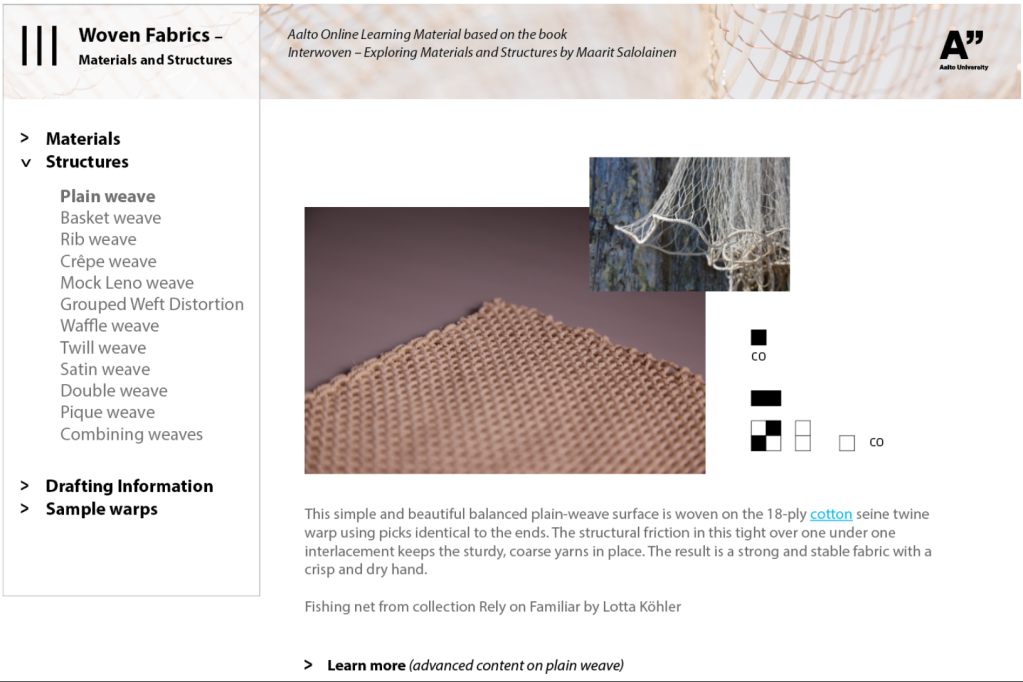Pedagogy courses are always a good opportunity to learn from best practice examples from outside but also from inside our own institutions, and connect with the pedagogical developments within our own workplace.
I work at Aalto University, an institution that hosts around 12000 students, across the School of Arts, Design and Architecture, Business, Electrical Engineering, Engineering, Chemical Engineering and Science. I teach in the School of Arts, Design and Architecture, where there are around xxx courses. In such a complex enterprise, learning from other colleagues across programes, schools and departments can be difficult. From the inside, the visibility of existing courses is scattered and the intensity of the course dynamics doesn’t always encourage for such a discovery effort.
I never thought about blended learning as an opportunity until we were forced to go online last March 2020, due to the coronavirus pandemic. Up until then, in my world where teaching happened in-campus only I wasn’t aware of any Aalto online, open or blended offering. Well, it turns out that I was living in another planet! I recently found out that there are plenty of discussions and fantastic examples to learn from my own home university.
I would like to share with you the lessons learnt by my colleagues in Fashion design, who have been innovating their courses towards an online and blended learning. I invite you to take a look at three of their cases – examples of what works and doesn’t, and sneak into what my colleagues at Aalto are doing today.
Thinking in blocks or modules
In traditional face to face courses, content is thought of as a continuum that is consumed in a linear sequence. In online learning however, this sequence is not linear and hence it requires the content to be more flexible. By thinking in blocks it allows the content a modularity that better suits a self-paced asynchronous learning. Blocks or modules are also easier to combine with face to face activities and to share as online material with other courses.
 Image 1: Using MyCourses as a study content page (not a course page) with learning video material that can be easily shared across courses
Image 1: Using MyCourses as a study content page (not a course page) with learning video material that can be easily shared across courses
Case: Aalto University – Advanced Online Course in Computer-Assisted Dobby Loom Weaving by PETRA HAIKONEN
Study material webpage vs. Study content page
When deciding what platform to use it is important to understand the distinction between a study material webpage (course page) vs. a study content page (textbook). In the Advanced Woven Fabrics case (see Image 1 above) they used MyCourses as a study content page – not a course page, to collect all the learning material in one place.
Online material should work like a textbook that is carefully catered and packaged in one place. It can contain videos, readings and instructions. In the Woven fabrics course case (see Image 2 below) they even organised the material in three study levels according to students’ needs and credits attained: basic, advanced and expert level. In this case, they used a separate website on WordPress as it allowed them to have more flexibility in the design of the textbook.
 Image 2: Online textbook type of study material using WordPress. A ‘textbook website’ that is more user friendly and can easily integrate in other course in modules.
Image 2: Online textbook type of study material using WordPress. A ‘textbook website’ that is more user friendly and can easily integrate in other course in modules.
Case: Aalto University – Woven Fabrics – Materials and Structures by TIINA PAAVILAINEN, MAARIT SALOLAINEN
A strategy to optimise resources
Online materials save resources, time and money. For the Testing textiles course (see Image 3 below), it was a way for them to replace a study trip and to involve external guest lectures. Likewise, thinking in modules is helping them to create a ‘bank of blocks’ (website, videos, online lectures, etc..) as a strategy to share content and build cohesive connections between across courses
 Image 3: Using My Courses as a course page. Challenging technical solution as loading material and navigation through content is not agile.
Image 3: Using My Courses as a course page. Challenging technical solution as loading material and navigation through content is not agile.
CASE: Online material replaces a study trip to TAMK
Aalto University – Tekstiilit ja laatu (Testing Textiles) by
PIRITA LAURI, ANNA-MARI LEPPISAARI
Using the right platform that enables easy integration with other courses
Building webpages in Moodle (see Image 3 above), limits both the design of the content but also it hinders sharing the content outside of the course page. Using a separate website such as WordPress instead (see Image 2) allows more control over the look and feel but also by providing a much more user friendly interface that welcomes learners to browse information and that motivates them to spend their time on it.
WordPress has also allowed the Woven fabrics course content (see Image 2) to be shared as a module in four different courses, which is easily displayed in the My Courses course pages (Moodle).
Some of these cases have been supported by the Aalto University’s A!OLE (Aalto Online Learning that has been funding pilot projects since early 2016 for developing online and blended learning. Please take a look at the current pilots and get inspired to start your own blended journey.